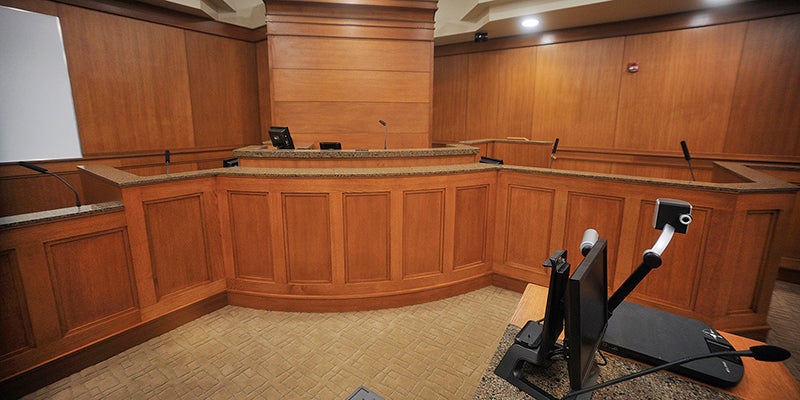As Walz signs $30 million for rural EMS, providers worry it’s not enough
Published 8:23 am Friday, May 24, 2024

- Dodge Center Ambulance emergency medical technician Brooke Yennie checks a patient’s breathing during a call near neighboring Kasson on March 29. Ben Hovland | MPR News
|
Getting your Trinity Audio player ready...
|
By Ellie Roth
Gov. Tim Walz traveled Thursday to the rural town of Hoyt Lakes to sign a bill that will send $30 million to rural emergency medical services, a shot in the arm that providers had hoped would be even bigger.
The legislation will provide $24 million in short-term emergency aid for EMS in greater Minnesota. The other $6 million will go towards creating a “Sprint Medic” pilot program to test the efficiency of roving paramedics in rural Minnesota.
The bill also establishes an Office of Emergency Medical Services that will oversee Minnesota’s EMS network. And it includes policy changes that will help address workforce shortages by expanding the staff who can work in rural ambulances.
But the funding is only about a quarter of what EMS providers say they need to prevent ambulance services from closing or cutting back. Minnesota’s EMS Regulatory Board has identified a $122 million funding need from the state in order to continue operating at present levels. This number is based on the statewide deficit for ambulance service costs.
EMS providers, paramedics and mayors came to the Capitol multiple times over the session in an attempt to plead their case.
Becca Huebsch, the Director of EMS and Emergency Preparedness at Perham Health and Perham Area EMS, said she had mixed emotions regarding the amount of funding the services are receiving.
“I think we all knew it was a long shot,” Huebsch said. “But it wasn’t a wishful number, it was the real number.”
Huebsch said she hopes to return to the Legislature next year to seek more money for rural EMS.
“For so long, we’ve kind of been taking care of ourselves and we’ve been able to get by with less and less every year,” she said. “It was coming to a breaking point and any support is hugely instrumental in keeping us going.”
Dodge Center Ambulance interim director AJ Gengler said he isn’t sure what portion of the $30 million his station will receive. While he said he is thankful EMS services received some aid, he knows it won’t be enough to close the gap. His station plans to look at solutions locally, like funding the service through local taxes.
Gengler said the overall amount “is not near the mark of what we were hoping for to truly help all services. I guess the hope is that this money they did pass is enough to maybe delay the closure of some services.”
‘It’s a start’
Ambulance services often fail to recover the actual costs of providing their services. According to a report from the EMS regulatory board, ambulance services collectively received $763 million less from insurance companies than the charges they had billed in 2023. The majority of that deficit came from publicly funded insurance programs like Medicare and Medicaid.
On top of that, ambulance services rely heavily on volunteer EMTs and paramedics. The statewide volunteer subsidy was over $55 million for 2023, according to an analysis done by the regulatory board. But volunteerism rates are on the decline.
The funding was greater than what had initially been proposed by Walz and DFL legislative leaders, who had put their spending target at $16 million. Sen. Grant Hauschild, DFL-Hermantown, was the author of the original bill asking for $120 million. During a committee hearing earlier this month, he acknowledged the funding shortfalls.
“I have presented a bill for 120 million, that’s what I’ve been pushing for. I’m one legislator, I’m fighting for rural ambulances,” Hauschild said. “The governor has proposed 16 million and the Minnesota GOP is offering 30. So we’re matching that, that GOP offer of 30 million with this bill.”
Bradley Peterson, executive director of the Coalition of Greater Minnesota Cities, expressed frustrations with the final number.
“The needs were, I think, very clearly articulated. There was never any doubt that something needed to be done to kind of shore up and stabilize these providers,” Peterson said. “It’s a start but it’s not enough. And it’s disappointing that there didn’t seem to be more recognition of the needs there.”
An Emergency Medical Services Task Force will submit a report that includes recommendations for long-term solutions addressing the rural EMS shortage in August.
Sprint medic program
The sprint medic pilot project will last two years and be based in St. Louis, Grant and Otter Tail counties. Money for the program will be disbursed in July. Perham Area EMS will be one of the ambulance services involved in the project. Huebsch said participants in the project met this week to discuss implementation.
“The goal is to have it operational as soon as we can after the disbursement,” she said. “We don’t want to waste a lot of time with extra planning.”
The primary job of these paramedics is not to transport patients, but deliver care on site. These roving paramedics, equipped with necessary equipment and medicine, will be stationed in regions where there are staffing shortages. The paramedics will drive SUVs instead of large ambulance rigs, giving them the ability to move more quickly across large regions. They will also be able to determine if a full ambulance response is necessary.
“Having someone in a more maneuverable vehicle that’s already out in the rural areas, hopefully it will speed up the time to when (patients) get that first assistance,” Huebsch said.
Huebsch said the program could lead to shorter response times and less gaps in coverage.
“With our budget being so out of proportion, and the lack of reimbursement, we wouldn’t have been able to try this on our own,” Huebsch said. “This gives us an opportunity to give something a try that could actually really alleviate some of our issues here in rural areas.”





